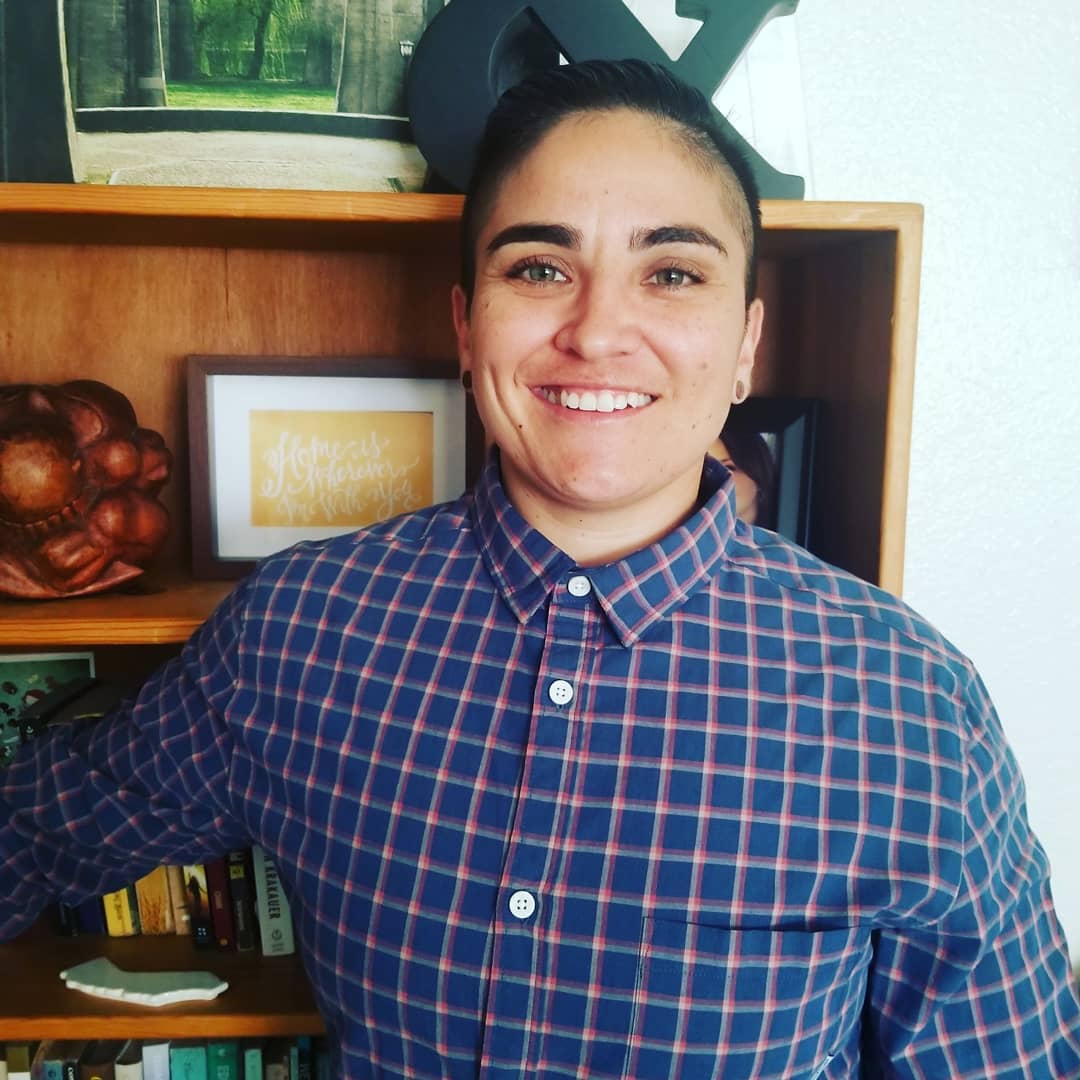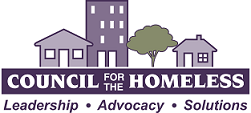By To the Point Collaborative
 Siobhana McEwen brings a powerful background to her new role as Equity and Advocacy Director for Council for the Homeless.
Siobhana McEwen brings a powerful background to her new role as Equity and Advocacy Director for Council for the Homeless.
She grew up in a small Midwestern town, but served aboard one of the oldest Navy aircraft carriers to sail the seas. She has a Master’s degree, but learned much of what drives her through oral histories of community elders, neighbors, and loved ones. She is biracial but is often seen as white. She has been a journalist, teacher, and direct service provider.
Now, she is charged with providing the Council with a path forward to define equity, implement and apply those practices within the organization and the homeless crisis response system, as well as the wider community. It is a responsibility that she is grateful to accept–but one that she emphasizes cannot be carried out without collaboration from others in the community.
“I think that the possibilities for what someone in this role (Advocacy and Equity Director) can achieve are endless,” she says. “Clark County is a diverse community with people from every economic, political, ethnic and cultural corner of society. I’m really looking forward to working with the Clark County community and with staff at the Council to develop and work toward implementing supportive, equitable, just practices and experiences within our community (and our organization) as a whole.”
She was raised in a small Nebraska town just 40 miles from the Oglala Lakota Sioux Nation Indian Reservation at Pine Ridge, S.D. Her father is Scotch-Irish and from the South side of Chicago, her mother was an immigrant from Guyana, whose ancestry were part of the Indian diaspora during British colonialism. As a biracial child in a mixed race household, it never occurred to her that her family was somehow “different.”
“The folks in our community were helpful and friendly. My dad was often the only white person in the house. I never knew it was unique.” Her father had friends among all the local groups, including the Sioux. Through his contacts, Siobhana was introduced to the Native American oral traditions, where knowledge is passed down through storytelling. Early on, she learned to listen to and love storytelling. The stories played a significant role in her education.
After a stint as a social studies teacher in Nebraska, she headed West, where fate led her to her next career in the Navy. Aboard the USS Nimitz aircraft carrier, she served as a photojournalist, where she documented the events and daily life of the crew. Returning to civilian life, she was ready to synthesize all that she’s seen, heard, and felt into a way to provide direct services to Vancouver, where she and her family settled.
“In the Navy, we’d use the phrase, ‘direct reflection’, which meant that our ship was a direct reflection of society in the U.S. Our crew was comprised of people from every corner of the country, and we had to learn how to quickly bridge those gaps in order to accomplish the mission.” It turns out, Siobhana was no stranger to the idea of building bridges.
“My passion has always been in being in community with others, especially with others who are different from me. One saying that I learned from the Oglala Lakota Sioux Nation that has always stuck with me is “Mitákuye Oyás’iŋ”, which, in Lakota means roughly, ‘we are all related’. It doesn’t matter if we’re standing across the political aisle from each other, across the country from each other, or across the globe, I believe in the power of human interconnectedness. When we focus on community, on humanity, and we hold each other accountable for our behaviors, we are capable of so much!”
The opportunity to join the Council came just as she was searching for the right fit.
“I was drawn to the Council because it struck me as an organization that is committed to doing the work that is necessary for growth, specifically in regard to equity and community engagement and accountability. I’m a firm believer that there is always room for growth and development, and frankly, when it comes to self-awareness and examination of our own biases and judgements, the work really is never ending. After having been in direct-service as a clinical social worker for several years, I was tired of seeing organizations that were focused on ‘fixing’ rather than ‘healing.’”
The Council offers her the opportunity to fulfill her quest for a role where she can take a leadership role in the pursuit of equity in her community. She’s still new on the job; she came aboard in May. But her excitement for this latest career challenge is palpable. She knows equity is still an unfamiliar concept for many. But she believes that she has the skills to advance the cause, especially with the strong support of her Council team.
“We’re not going to solve the problems created by historically racist and oppressive policies and practices overnight. We’re not going to end houselessness overnight, and we’re not going to bring our community together over common experiences overnight. But I think that we’re moving in that direction, I think the Council is helping our community move in that direction, and I am both honored and humbled to be a part of those efforts.”
